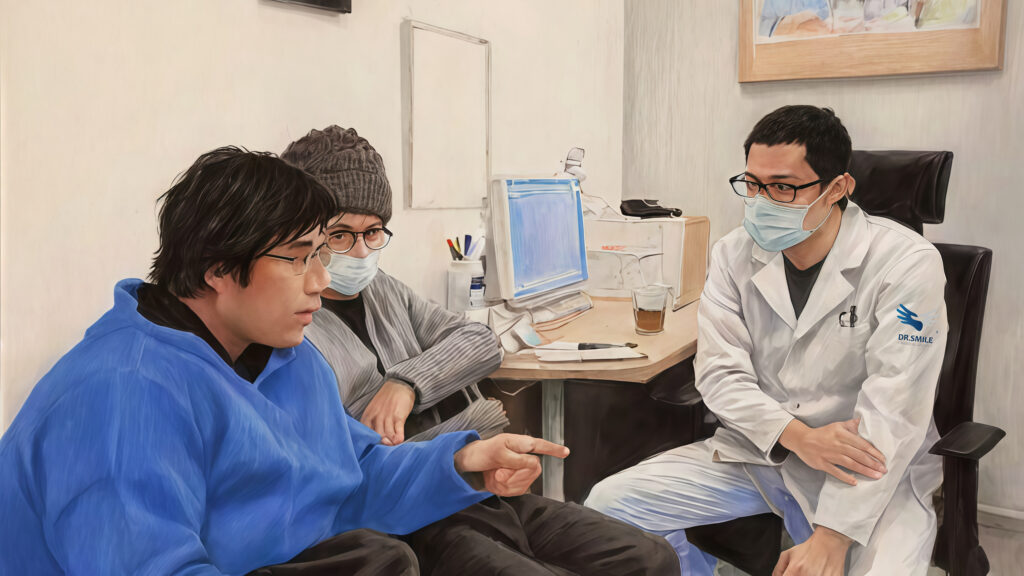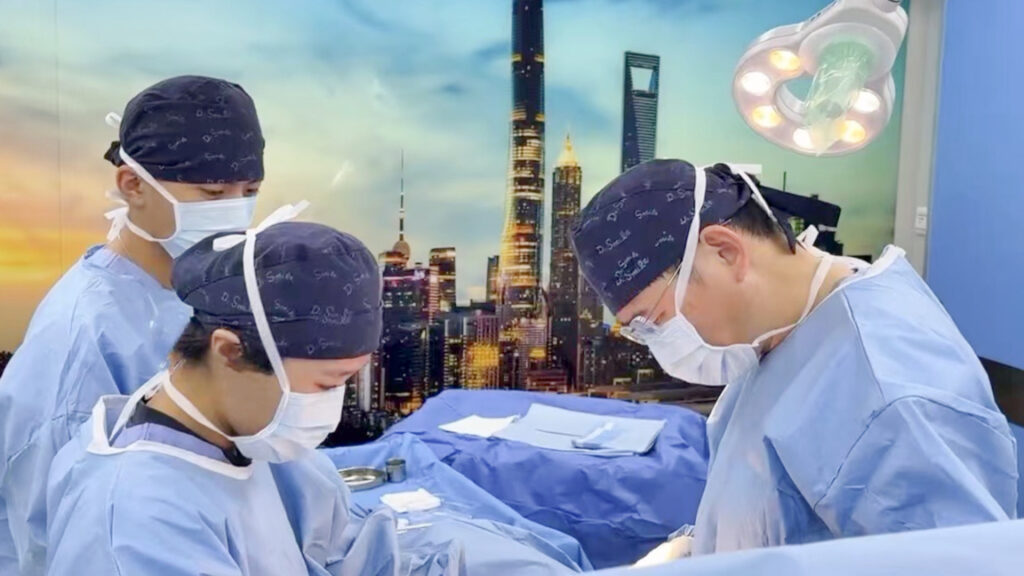Originally contributed by Dr. Qiang Zhang on the Veinsights . Original Link:https://veinsights.blogspot.com/2024/11/chiva-treatment-for-varicose-veins.html

As a vascular surgeon, I would like to document a special case of a 76-year-old patient who underwent heart valve surgery and has been on long-term anticoagulation therapy with warfarin while also suffering from varicose veins. This case demonstrates the unique advantages of CHIVA therapy in treating varicose veins without stopping anticoagulant medications.
Patient Overview
The patient, due to anticoagulation requirements after heart valve surgery, needs to take warfarin long-term, necessitating extra caution in daily life. Meanwhile, her varicose vein condition had progressively worsened, with the proximal great saphenous vein developing an expansion exceeding 2 cm, increasing the risk of thrombus formation. Additionally, pigmentation had developed on her lower leg, resulting in fragile skin that would be difficult to manage in case of bleeding. Therefore, a safe and effective treatment plan was essential.

Choosing CHIVA Therapy
Traditional surgical approaches often require stopping anticoagulant medications to reduce bleeding risk. However, for patients who have undergone heart valve surgery, stopping anticoagulants could lead to serious thrombotic risks. Furthermore, the patient had aneurysmal expansion in the proximal great saphenous vein, making thermal ablation or other endovenous treatments unsuitable. Thus, finding an effective solution without stopping anticoagulant therapy became the key challenge.
CHIVA (Cure Conservatrice et Hémodynamique de l’Insuffisance Veineuse en Ambulatoire) was the chosen approach. CHIVA is a conservative, minimally invasive treatment method performed under local anesthesia. It requires only small incisions, without the need for vein stripping or puncturing, greatly minimizing surgical risks. Due to its minimal intervention on the venous system, CHIVA can be performed safely without discontinuing anticoagulant medications.

Surgical Outcome and Observations
We have successfully treated 25 similar cases where anticoagulant therapy was not discontinued, demonstrating the reliability of this approach.
The procedure was successful, with no subcutaneous bruising or significant wounds. The patient was able to walk immediately after surgery. This case demonstrates the feasibility and safety of CHIVA therapy for patients who continue anticoagulant therapy.
Patient Selection, Postoperative Measures, and Considerations
When performing CHIVA without discontinuing anticoagulants, careful patient selection and specific considerations are required:
Patient Selection Criteria
- Minimal Incisions: Suitable patients for CHIVA should have venous anatomy that allows for minimally invasive procedures to reduce the number of incisions and bleeding risk.
- Moderate Weight: Obese patients may face increased surgical difficulty and uncertain postoperative recovery. Thus, selecting patients with a moderate weight helps reduce surgical risks and minimize bleeding.
- No Severe Comorbidities: Patients should be free of severe systemic diseases (e.g., uncontrolled hypertension or diabetes) to ensure a smooth surgical process and reduce intraoperative complications.
Postoperative Measures
- Compression Bandaging: Postoperative compression bandaging is essential to minimize the risk of bleeding and help redistribute venous blood flow, promoting healing.
- Use of Compression Stockings: Patients are advised to wear medical compression stockings postoperatively to increase local venous pressure, reduce the risk of bleeding, and prevent thrombus formation.
- Extended Observation Time: Since anticoagulants are not discontinued, the patient should be monitored for an extended period after surgery to promptly detect and address any bleeding complications.
- Avoid Long-Distance Travel: Patients should avoid long-distance travel on the day of the surgery to prevent complications from prolonged immobility and vibrations. Adequate rest and moderate activity are recommended to aid recovery.
Considerations
- Risk Management: Although CHIVA is minimally invasive, patients who continue anticoagulation therapy may have an increased risk of intraoperative and postoperative bleeding. Close monitoring and effective hemostasis measures are necessary during the procedure.
- Preoperative Assessment: A comprehensive coagulation assessment is essential before surgery to ensure that the patient’s coagulation status is within an acceptable range to minimize surgical risks.
- Anticoagulant Management: Depending on the patient’s specific condition, adjustments to anticoagulant dosage may be necessary to balance the risk of bleeding and thrombosis during the procedure. Postoperatively, anticoagulant dosage should be restored promptly to ensure patient safety.
- Postoperative Care: The wound site should be monitored for any persistent bleeding or subcutaneous hematoma. Patients should also avoid vigorous activities to minimize bleeding risk and ensure proper wound healing.
- Multidisciplinary Collaboration: Collaboration between vascular surgeons and cardiologists is crucial in such complex cases to adjust anticoagulation therapy based on the patient’s cardiac status.
Advantages of CHIVA Therapy
CHIVA therapy differs from traditional vein stripping or laser treatments, as its core principle is to preserve venous structures and optimize hemodynamics to achieve therapeutic goals. For patients requiring long-term anticoagulation, CHIVA offers a safer solution without the need to discontinue medication.
Compared to other treatment options, CHIVA minimizes damage to healthy veins, requires no long recovery periods, and avoids significant bruising and incisions. Patients can resume activities immediately after the procedure, significantly improving their quality of life and satisfaction.
It is important to note that CHIVA is not suitable for all patients with varicose veins, and eligibility should be determined by a physician based on the patient’s specific condition. The essence of CHIVA lies in combining conservative and individualized treatment, optimizing hemodynamics for the best outcome.

Conclusion
For this patient, CHIVA therapy not only effectively resolved her varicose vein issues but also eliminated the need to stop anticoagulant medications. With its gentle and effective characteristics, CHIVA has proven to be an ideal choice for treating varicose veins.
For patients who cannot discontinue anticoagulation therapy, CHIVA is a safe and reliable option, enabling more patients to receive effective treatment for varicose veins without compromising their anticoagulation needs.